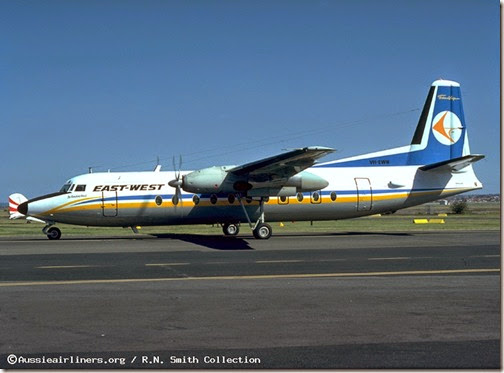In my first column in this series on the history of civil aviation in New England, I wrote of the formation of the North’s first and second major airlines, New England Airways (1931) followed by East-West Airlines (1947). In my second column, I described the formation and early growth of Tamworth Air Taxis/Tamair (1949), the company that would form the core of New England’s third major airline, Eastern.
The 1970s were a remarkable period for New England civil aviation. East-West Airlines successful 1961 defence of its independence against Commonwealth Government pressure to merge with Ansett had opened a chink in the Government’s rigid two airlines policy. Since then, East-West had been constantly pushing the boundaries as it sought new business.
During the 1970s other new regional or commuter players entered the fray, seeking to establish new routes. These included Aeropelican Air Services (Newcastle), a new New England Airways (Armidale), Oxley Airlines (Port Macquarie) and Air North Coast (Coffs Harbour).
Development activity was especially intense in Tamworth as the headquarters of both East-West and Tamair.
A far larger than life figure, East West’s Don Shand was a lateral thinker constantly bubbling with new ideas. East-West planes would seed the sky to encourage rain fall. That rain would fall on pastures improved by aerial agriculture, on crops improved by new hybrid seeds. The land would be mapped from the air, while the passenger planes flying above would use New England wool in furnishings and insulation.
A number of Don’s ideas failed. His vision of an international university of air training headquartered at Tamworth airport as part of the University of New England appears to have foundered on Armidale parochialism. Tamworth would later get its air academy, but without UNE or Armidale involvement. But despite the sometimes failures, enough of Don’s ideas succeeded to lay the base for multiple new activities across the North..
Don died in November 1976. By then, Tamair’s John Roworth had embarked on his own rapid expansion phase.
In 1976, Tamair acquired Airfarm & Associates, another East-West spin-off founded by Basil Brown, followed by New England Airways (1977) and then Air North Coast (1978). Other acquisitions followed, including Avdev (previously Advance Airlines) and Wings Australia. With so many new routes, Tamair was renamed East Coast Computer Airlines to better reflect its new scope.
As part of these changes, Roworth introduced East-West as a shareholder, along with other local investors. This provided greater financial backing, but Roworth was also interested in East-West’s thinner traffic routes. These, he thought, might be better served by East Coast’s commuter services, allowing East-West to focus on its main routes.
The scene was now set for the dramatic New England aviation wars of the 1980s that I will describe in my final column in this series.
Note to readers: This post appeared as a column in the Armidale Express Extra on 9 April 2014. I am repeating the columns here with a lag because the columns are not on line outside subscription. You can see all the Belshaw World and History Revisited columns by clicking here for 2009, here for 2010, here for 2011, here for 2012, here for 2013, here for2014.
The first post in this series is History revisited – introducing a flying history. From there, you can follow the story though.










No comments:
Post a Comment